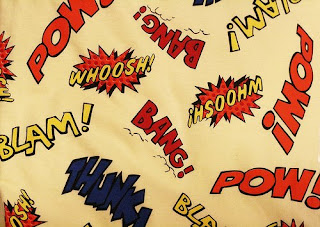

Leon Ferrari, left, and Mira Schendel, right
If a picture is worth a thousand words, a picture containing words has worth to the nth power. The special exhibition up at MoMA now, Tangled Alphabets, examines the works of two artists who explore words extensively in their works, and it got me thinking about how words have been used in art. Writing on an artwork exists traditionally as a signature or a date, or perhaps an inscription such as ‘Marcus me fecit.’
Tangled Alphabets focuses on the work of South American painters León Ferrari and Mira Schendel. The show says that the artists “produced their works in the neighboring countries of Argentina and Brazil throughout the 1960s and 1980s, when the question of language was particularly central to Western culture due to the central role taken by post-structuralism, semiotics, and the philosophy of language.“


Franz Kline, left, and Cy Twombly, right.
Since the 1950s however, writing has come into prominence in the visual arts. Surrealism, and the automatic writing it inspired (where the author writes from his or her unconscious) combined with an interest in the East, led to the prominence of the written word in Abstract Expressionist works. And, at least according to the critic Harold Rosenberg, the action painting popular at the time allowed the psyche assert or express itself, similar to the process of automatic writing.
From
Wikipedia we have it that “automatic writing was an important vehicle for action painters
Franz Kline in his black and white paintings, Jackson Pollock, Mark Tobey and Cy Twombly who used gesture, surface, and line to create calligraphic, linear symbols and skeins that resemble language, and resonate as powerful manifestations from the collective unconscious.” In the hands of artists like Kline or Twombly, writing becomes a lush visual element. (Kline denied that it was in fact calligraphy; Twombly’s graffiti-like scrawls are legible.)
Andy Warhol, left, and Roy Lichtenstein, right.
Of course, pop art took words in another direction, as they exploited comic books (Roy Lichtenstein) or packaging (Warhol) In these works, the words are an intrinsic part of the image being reappropriated. In the reuse of printed materials, like some of Robert Raucheneberg’s collages, words become part of the material itself.
 For a contemporary approach to automatic writing, look no further than MoMA’s recent acquisition. This untitled work, above, by British artist Jack Strange features a lead ball pressing down the g key indefinitely. (I was born the same year as the artist, 1984, and feel like I desperately need to catch up with someone who already has 2 works at MoMA!)
For a contemporary approach to automatic writing, look no further than MoMA’s recent acquisition. This untitled work, above, by British artist Jack Strange features a lead ball pressing down the g key indefinitely. (I was born the same year as the artist, 1984, and feel like I desperately need to catch up with someone who already has 2 works at MoMA!)
Words are conceptual and tied to a specific meaning, while the visual arts are just that, visual, visceral and more fluid in meaning. The combination of words and images makes your mind work overtime. Having to read something uses a different part of the brain that looking at something, and sometimes words seem too explicit. On the other hand, they certainly pack a punch.








 For a contemporary approach to automatic writing, look no further than MoMA’s recent acquisition. This untitled work, above, by British artist Jack Strange features a lead ball pressing down the g key indefinitely. (I was born the same year as the artist, 1984, and feel like I desperately need to catch up with someone who already has 2 works at MoMA!)
For a contemporary approach to automatic writing, look no further than MoMA’s recent acquisition. This untitled work, above, by British artist Jack Strange features a lead ball pressing down the g key indefinitely. (I was born the same year as the artist, 1984, and feel like I desperately need to catch up with someone who already has 2 works at MoMA!)